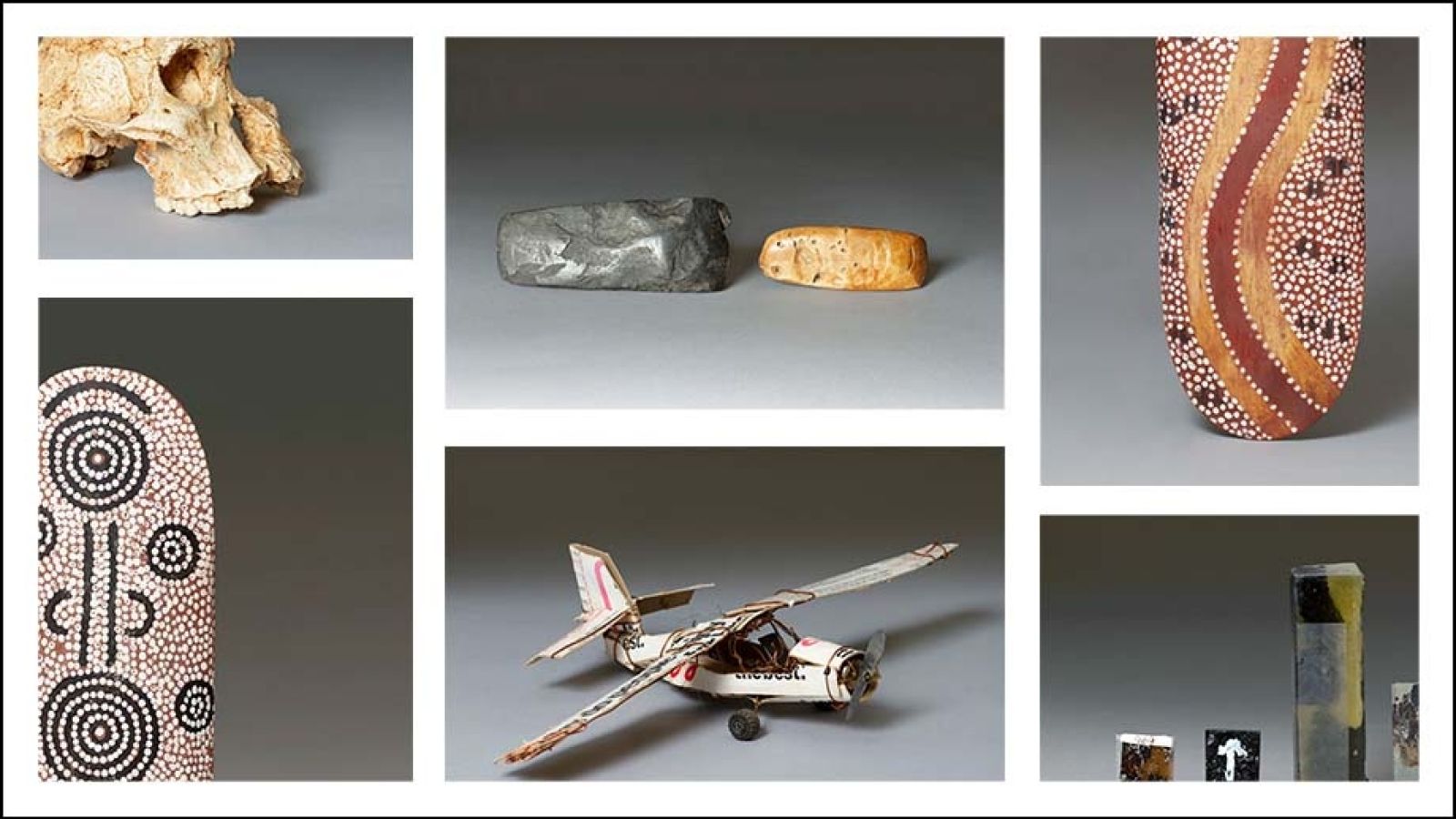Online showcase seeks to give new life to old objects

For many years, objects relating to pioneering archaeology and anthropology research have been collecting dust in boxes on campus. Objects such as the “Whitlam Shields”, donated to the ANU School of Archaeology and Anthropology by former Prime Minister Gough Whitlam in November 1980, Tikopian ritual adzes, and 7,000 year old soil samples from Kuk Swamp – one of the earliest sites in the world for the development of agriculture.
Items in the collection represent cornerstones of archaeology and anthropology in Australia, and a new ANU website has been launched to showcase them to the general public as well as bring them to the attention of other researchers who may wish to use the objects to generate further discoveries.
“As much as it’s about history, it’s also about the future,” says Dr Elle Grono from the ANU School of Culture, History and Language and one of the people behind this project.
Maggie Otto, ANU Research School of Humanities and the Arts Collections Officer, adds, “We want to give a glimpse into the variety of collections at the school and spark curiosity and interest into pursuing new projects.”
Along with beautiful photographs of the objects, descriptions tell the stories of these objects, the insights that research on these objects have given us, and indicate their value as subjects of further research.
One of the group of objects featured are Tikopian ritual adzes. Adzes were used by the Tikopian people of the Solomon Islands for both ritual and utilitarian purposes. Now they’re being analysed by Masters student Isabella Shaw for her research, as well as by ANU Pacific archaeologist Dr Guillaume Molle for his.
Dr Molle and his collaborators are in the process of running residue analyses on the adzes. They’re seeking to untangle a conundrum of the adzes, which were collected in 1952 by Sir Raymond Firth; one of the most famous anthropologists of the 20th century.
“Most of the adzes in the ANU collection appear to have been daily tools, but if they’re determined to have been ritual objects, this will give rise to questions about their function and value,” Dr Molle says. “And if they were ritual objects, why it was that the Tikopia people surrendered these sacred items?”
“So the interest really lies between the ritual and utilitarian values of these artefacts.”
Like the other objects in the collection, these adzes, Dr Molle says, have so much more left to give as research items.
“They can be analysed using scientific techniques for archaeological research, assessed through an anthropological lens to understand what they meant to the islanders who manufactured them, and from a museums and curatorial standpoint as to what they mean today and for the history of collecting in the Pacific – to offer a few ideas,” he says.
View the SoAA Collections Website now: https://archanthcollections.anu.edu.au/
Written by Evana Ho